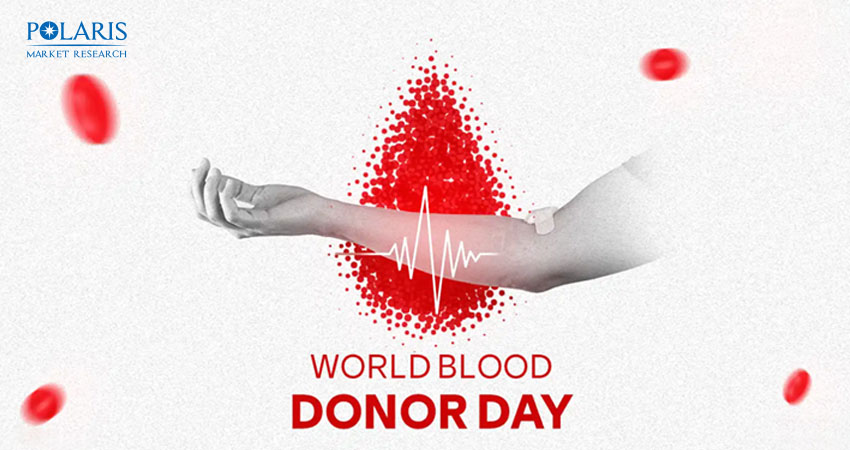Why Donating Blood Saves More Lives Than You Think?

It goes without saying that blood is an essential life force. It constantly flows through the blood vessels and carries oxygen and nutrients throughout the body. In case of injury, blood forms blood clots to manage bleeding. It also plays a crucial role in protecting the body from infections, carrying waste products, and regulating the body’s temperature.
Blood can’t be artificially created in a lab. As such, healthcare facilities have to rely on blood donations to meet the need for blood among trauma victims, surgical patients, and individuals with blood disorders. This blog post takes you to the realm of blood donation, covering its history, significance, and importance for healthcare. Also, it sheds light on how initiatives like World Blood Donor Day are encouraging individuals to donate blood to help those in need and contribute to a stable blood supply.
History of World Blood Donor Day
The World Blood Donor Day was established by the World Health Organization in 2004. It was created to promote voluntary blood donation and thank doctors across the globe for their life-saving contributions.
The celebrations of World Blood Donor Day take place on June 14 every year. The day marks the birthday of Austrian American immunologist and pathologist Karl Landsteiner. Landsteiner received the 1930 Nobel Prize for Physiology or Medicine for his work on blood group typing.
Landsteiner was the first to discover major blood groups, which include A, B, AB, and O groups. His work on blood types transformed blood transfusions. It also led to the practice of transfusing blood between people with compatible blood types. This paved the path for the modernization and increased safety of blood transfusions.
The Process of Blood Donation
The process of blood donation is simple, safe, and takes about an hour to complete. Before donating blood, the individual will be asked to fill out a confidential medical history. This includes questions about behaviors known to carry higher bloodborne infection risks. Owing to the risk of bloodborne infections, the individual must meet specific criteria before being able to donate blood.
The donation facility will also conduct a brief physical exam. It involves checking the pulse, blood pressure, and temperature. For that, a small blood sample is taken from a finger prick, and the hemoglobin level is assessed. If the hemoglobin concentration is within a healthy range and other screening requirements are met, the individual can donate blood.
During blood donation, the individual lies or sits in a reclining chair with the arm extended on the armrest. A tourniquet or blood pressure cuff is placed around the arm to fill the vein with more blood. That way, it’s easier for the staff to see and insert the needle into the vein. After placing the needle, the individual is asked to tighten the first several times to help the blood draw from the vein. The blood is allowed to fill in the bag. Once done, the needle is removed, and a small bandage is placed on the needle site.
Importance of Blood Testing in Blood Donation
Individuals who want to donate blood need to get their blood tested. Blood testing is used to determine the blood type and its Rh factor. Blood type is classified as A, B, AB, and O. The Rh factor is a protein found on the surface of red blood cells, and its presence or absence is a key factor in blood typing. If the blood cells of the individual have the Rh protein, they are Rh-positive. If they don’t, they are Rh-negative. Matching Rh factor is crucial for safe blood transfusions.
The blood will also be tested for bloodborne diseases, such as HIV and hepatitis. The blood is distributed if the results of the tests are negative. If in case the results are positive, the donor center notifies the individual and the blood donation is discarded.
Celebrating World Blood Donor Day 2025
The theme for World Blood Donor Day 2025 is “Give blood, give hope: together we save lives.” The campaign aims to increase awareness about the importance of blood and blood plasma donations and their impact on the lives of patients. It also aims to encourage both existing and new donors to donate blood regularly to ensure a stable and sufficient blood supply. Another objective of the 2025 campaign is to highlight the positive impact of blood donation on the health and well-being of others.
Role of Blood Donations in Healthcare
Donating blood is more than just saving lives in emergencies. It plays a foundational role in healthcare globally. Here’s how:
Supports a Wide Range of Treatments: Blood is essential for surgeries, managing chronic conditions, and childbirth care. It is also used in the treatment of conditions like sickle cell disease.
Enables Rapid Response in Crises: Blood helps healthcare facilities to respond quickly and effectively to natural disasters or major accidents.
Maintains Everyday Hospital Operations: Hospitals rely on a steady supply of blood to maintain everyday health operations.
Improves Patient Outcomes: Blood transfusion significantly improves patient outcomes by replenishing lost blood volume and supporting the body's ability to heal and fight infection.
Providing Components for Specific Needs: Donated blood can be separated into its components, which include red blood cells, platelets, and plasma. These components help meet the specific needs of patients based on their condition.
To Conclude
Blood donations play a crucial role in modern healthcare. As a key element of healthcare systems, it enables treatment for injuries, surgeries, and illnesses. Beyond emergencies, blood donation also helps with diagnostic testing and blood samples. Initiatives like World Blood Donor Day remind us that donating blood is a life-saving act, offering hope and healing to those in need.

